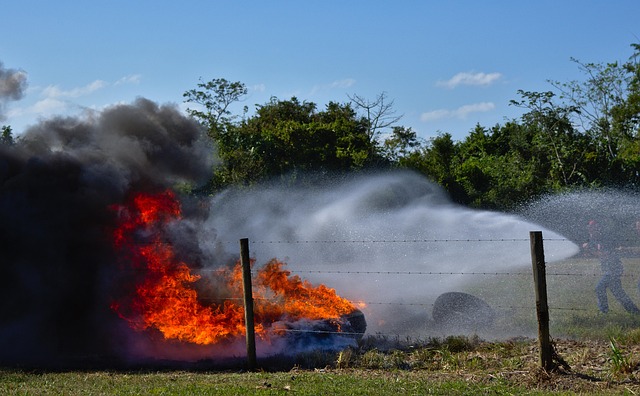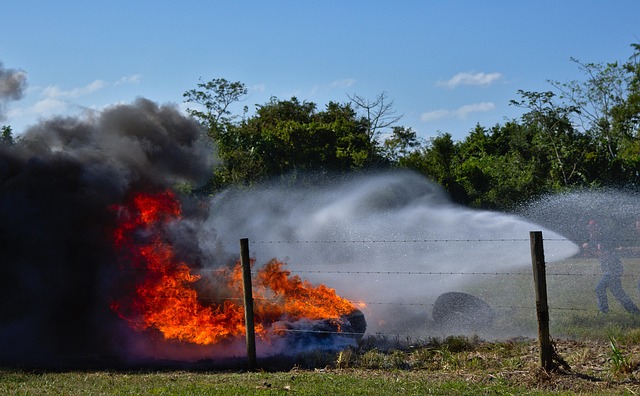Category: Emergency Water Extraction McKinney TX
Emergency Water Extraction McKinney TX: A Comprehensive Overview
Introduction
In the face of natural disasters, accidents, or infrastructure failures, immediate action is crucial to mitigate damage and ensure public safety. Emergency water extraction in McKinney, Texas, stands as a vital service that plays a pivotal role in these critical situations. This article delves into the intricacies of emergency water extraction, exploring its definition, global impact, economic implications, technological innovations, regulatory framework, challenges, and future prospects within the specific context of McKinney, TX. By examining these aspects, we aim to provide a comprehensive understanding of this essential service and its role in community resilience.
Understanding Emergency Water Extraction McKinney TX: A Definition and Its Components
Definition:
Emergency water extraction refers to the rapid and efficient removal of excess water from flooded areas or structures to prevent further damage and restore normalcy. This process is critical during emergencies where water accumulation poses significant risks to property, infrastructure, and human life.
Key Components:
- Water Pumping Equipment: High-capacity pumps, including submersible pumps, are employed to remove water from affected areas. These pumps can vary in size and power, depending on the scale of the emergency.
- Drying Techniques: Along with pumping, specialized drying methods such as air movement, dehumidification, and desiccant materials are utilized to ensure complete water removal and prevent mold growth.
- Hazard Assessment: Before extraction begins, a thorough assessment is conducted to identify potential hazards like structural weaknesses or contaminated water sources that require specific handling procedures.
- Expertise and Training: Skilled professionals with specialized training in water damage restoration are essential for effective extraction. Their knowledge ensures the use of appropriate techniques and equipment.
Historical Context:
The concept of emergency water extraction has evolved over time, driven by technological advancements and increasing urbanization. Historically, local fire departments often handled initial water extraction during emergencies. However, the growing complexity of urban infrastructure and the increasing frequency of severe weather events led to the emergence of specialized water extraction companies. In McKinney, TX, these services have become integral to the city’s disaster preparedness plan, ensuring swift response times and effective damage mitigation.
Global Impact and Trends
International Influence:
Emergency water extraction services are not limited to Texas; they are a global imperative. Cities worldwide face similar challenges due to urbanization, climate change, and natural disasters. The global impact is evident in the widespread adoption of advanced water extraction technologies, with many countries sharing best practices and innovations.
Regional Trends:
- North America: The United States, including Texas, leads in disaster preparedness infrastructure. Advanced warning systems and well-trained response teams contribute to efficient water extraction operations.
- Europe: European cities, particularly those in low-lying areas, invest heavily in flood protection and water extraction technologies due to historical flooding events.
- Asia: Rapid urbanization in Asia presents unique challenges. Cities like Tokyo have implemented innovative water extraction systems integrated into their urban infrastructure.
- Developing Nations: In many developing countries, emergency water extraction remains a challenge due to limited resources and inadequate infrastructure. However, there is a growing recognition of the need for robust disaster response systems.
Economic Considerations
Market Dynamics:
The global market for emergency water extraction services is dynamic, driven by factors such as population growth, urbanization, and climate change. In McKinney, TX, the demand for these services fluctuates with seasonal weather patterns and local infrastructure developments.
Investment Patterns:
Private investments in water extraction technology and training have significantly contributed to the industry’s growth. Companies specializing in emergency response often collaborate with local governments to enhance their preparedness capabilities.
Economic Impact:
- Job Creation: Emergency water extraction services create specialized job opportunities, contributing to local employment rates.
- Cost Savings: Proactive water extraction during emergencies can prevent long-term damage, reducing reconstruction costs and insurance claims.
- Business Interruption: Efficient extraction minimizes business interruptions, especially in commercial areas, ensuring faster economic recovery.
Technological Advancements
Innovations in Water Extraction:
- High-Efficiency Pumps: Modern pumps are designed to handle high water volumes with reduced energy consumption, making them more environmentally friendly and cost-effective.
- Remote Monitoring Systems: Advanced sensors and monitoring devices allow real-time tracking of water levels, enabling faster response times.
- Drying Technologies: Improved dehumidifiers and desiccant materials enhance drying efficiency, reducing the time required for restoration.
- Robotic Assistance: In hard-to-reach areas, robotic extraction systems offer safe and efficient water removal.
Digital Transformation:
- Data Analytics: Predictive analytics and AI-driven models aid in forecasting flood risks, enabling proactive measures.
- Mobile Applications: Apps provide real-time updates on emergency services, helping residents stay informed during crises.
- Remote Assessment Tools: Drones and 3D imaging technology assist in rapid damage assessments, planning, and resource allocation.
Policy and Regulation
Regulatory Framework:
Local, state, and federal agencies oversee emergency water extraction operations to ensure safety and environmental compliance:
- Building Codes: These dictate structural requirements for flood resilience, including proper drainage systems.
- Environmental Regulations: Protections are in place to prevent the spread of contaminants during extraction.
- Occupational Safety: Standards ensure the safety of extraction personnel, especially when dealing with hazardous materials.
Policy Influences:
- Disaster Preparedness Plans: McKinney’s comprehensive disaster response plan incorporates water extraction as a critical component.
- Insurance Policies: Homeowners and businesses often have specific coverage for water damage, influencing the demand for efficient extraction services.
- Community Engagement: Public awareness campaigns educate residents on preventive measures and post-emergency cleanup protocols.
Challenges and Criticisms
Main Challenges:
- Accessibility: In dense urban areas, accessing flooded properties promptly can be challenging due to traffic congestion and narrow streets.
- Environmental Concerns: Improper extraction techniques may lead to soil contamination and groundwater pollution if not managed correctly.
- Training and Certification: Ensuring that all personnel are adequately trained and certified is essential for effective and safe operations.
- Equipment Maintenance: Regular maintenance of specialized equipment is crucial to prevent malfunctions during emergencies.
Criticisms and Solutions:
- Lack of Standardization: Critics argue for more standardized protocols, but McKinney’s response teams adapt their methods based on each incident’s unique challenges.
- Cost Implications: While efficient extraction saves costs in the long term, initial investment in technology and training can be high. Public-private partnerships can address this.
- Community Education: Raising awareness about preventive measures and post-emergency cleanup can reduce the burden on extraction services.
- Continuous Training: Implementing mandatory continuing education programs ensures that professionals stay updated with the latest techniques and safety protocols.
Case Studies: Successful Applications in McKinney, TX
Case Study 1: Flooding in Downtown McKinney (2020)
During a severe summer flood in 2020, McKinney’s emergency response team faced a significant challenge. Quick assessment and coordination led to the deployment of high-capacity pumps, extracting water from flooded buildings within hours. Advanced remote monitoring systems allowed real-time adjustments, ensuring efficient extraction. The swift response prevented substantial damage to downtown businesses and helped restore the area within days.
Case Study 2: Residential Complex Water Damage (2022)
A residential complex in McKinney experienced a pipe burst, leading to extensive water damage. The management team promptly contacted emergency extraction services. Specialized drying techniques, combined with efficient pumping, resulted in minimal mold growth and swift restoration. This case highlighted the importance of quick response times and advanced drying technologies.
Future Prospects: Emerging Trends and Growth Areas
Emerging Trends:
- Sustainable Practices: There is a growing emphasis on environmentally friendly extraction methods, including the use of reusable materials and energy-efficient equipment.
- Digital Integration: The integration of IoT (Internet of Things) devices will enable more connected and automated water management systems.
- Predictive Modeling: Advanced analytics and machine learning algorithms will enhance flood forecasting and resource allocation.
Growth Areas:
- Specialized Services: Niche services like industrial water extraction and complex structural drying are expected to grow as infrastructure projects expand.
- Disaster Tourism: While not ideal, the increasing occurrence of extreme events may lead to a demand for specialized extraction services in tourist areas.
- International Collaboration: Sharing best practices and technologies globally will drive innovation and improve disaster response capabilities worldwide.
Conclusion: Embracing Resilience through Emergency Water Extraction
Emergency water extraction McKinney TX represents a critical component of the city’s resilience strategy, enabling swift recovery from natural disasters and accidents. By understanding its definition, global impact, economic significance, technological advancements, regulatory framework, challenges, and future prospects, we recognize its essential role in community safety and well-being. The successful case studies from McKinney demonstrate the positive outcomes of efficient water extraction services, reinforcing the importance of continued investment and innovation in this field.
FAQ Section
Q: How do I know if my property needs emergency water extraction?
A: If your property has experienced significant water intrusion due to flooding, leaks, or any other cause, it may require extraction. Look for signs like water stains on ceilings, mold growth, or musty odors.
Q: What should I do immediately after a water emergency?
A: Turn off the main water supply if safe to do so. Evacuate the premises and contact professional water extraction services as soon as possible. Do not attempt to handle severe water damage yourself.
Q: How does emergency water extraction differ from regular flooding cleanup?
A: Emergency extraction focuses on rapid removal of standing water during critical situations. Regular flooding cleanup involves a more extensive process, including water removal, drying, decontamination, and restoration.
Q: Are there environmental risks associated with emergency water extraction?
A: When conducted properly, modern extraction methods minimize environmental risks. Professional teams follow strict guidelines to prevent soil and groundwater contamination. However, improper techniques can pose hazards, emphasizing the need for trained professionals.
Q: Can I perform emergency water extraction myself?
A: It is strongly advised against attempting emergency water extraction without proper training and equipment. Professional teams have the expertise and resources to handle these situations safely and effectively.
Emergency Water Extraction McKinney TX: Navigating Disaster Relief

Water disasters in McKinney, TX, require immediate action. Emergency Water Extraction McKinney TX se…….
Emergency Water Extraction McKinney TX: Efficient Basement Drying Solutions

In water emergencies, McKinney TX homeowners should assess, contain, and shut off water supply immed…….
Emergency Water Extraction McKinney TX: Quick Cleanup Help

In McKinney TX, immediate emergency water extraction services are vital after storms or floods. Prof…….
Emergency Water Extraction & Restoration in McKinney TX: Quick Relief

Emergency Water Extraction McKinney TX: Swift and specialized services by professionals are vital fo…….
Emergency Water Extraction: Fast Flood Relief in McKinney TX

Swift action is key after a flood. Emergency Water Extraction McKinney TX services use specialized e…….
Emergency Water Extraction & McKinney TX Flood Cleanup Services

In McKinney, TX, professional emergency water extraction services are crucial for storm or flood rec…….
Emergency Water Extraction & Fast Flood Repair McKinney TX

In case of a flood in McKinney, TX, immediate emergency water extraction is key to minimizing damage…….
Emergency Water Extraction McKinney TX: Saving Your Home

Water damage emergencies in McKinney, TX, require immediate action from emergency water extraction s…….
Emergency Water Extraction McKinney TX: Mold Prevention Secrets

In McKinney, Texas, swift action with Emergency Water Extraction McKinney TX services is crucial for…….
